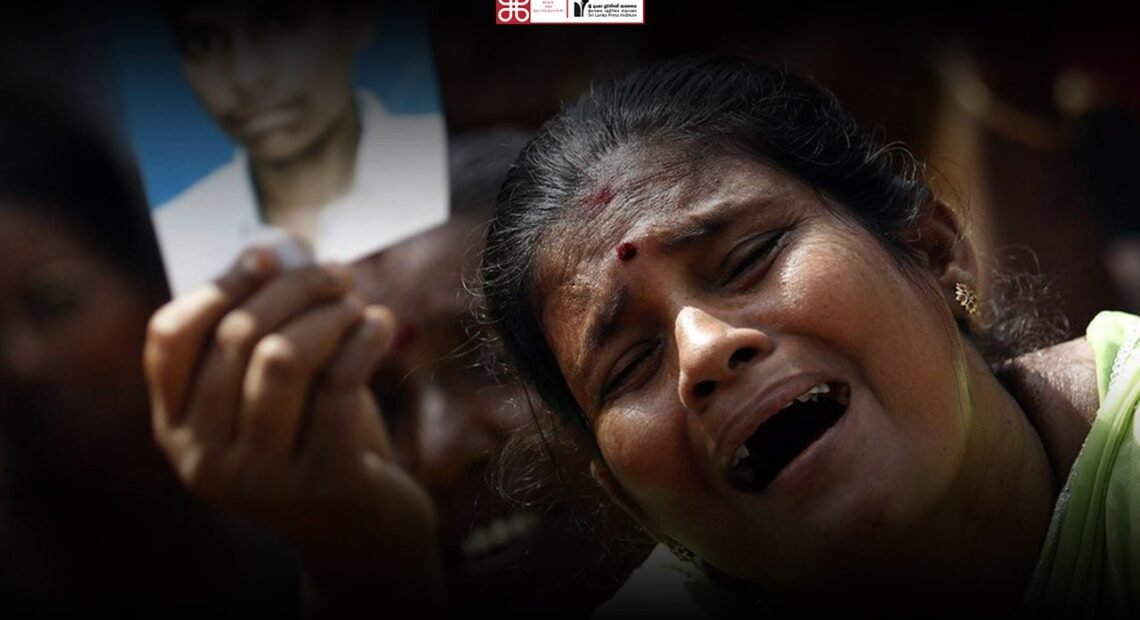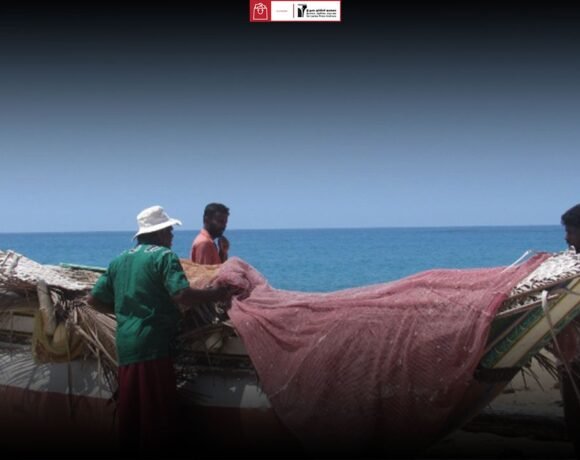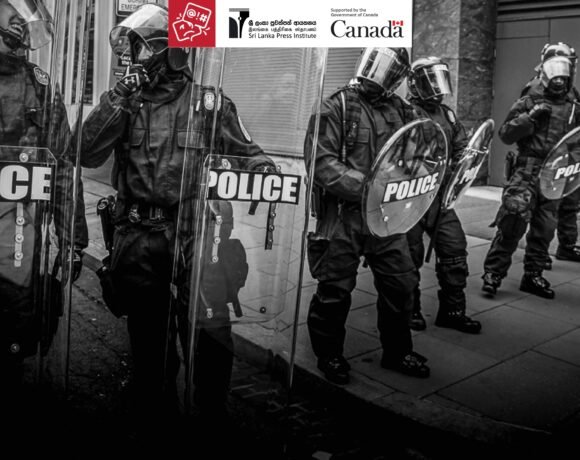
War, the Writer, and Humanity
Kapila Kumara Kalinga
“Tasteful writing” is an often-used term in journalism. It refers to writing that captivates the reader in a way that an article can be read in a single breath. Tasteful writing can be achieved through both a simple and smooth use of language as well as in an idiom that is rich and sophisticated. Representatives of the first category of such writers include stalwarts such as B.A. Siriwardena (a.k.a “Aeththa Sira”), D.S. Kariyakarawana, Karunadasa Sooriyarachchi, Chinthana Jayasena and Sunil Madhava Premathilaka. Journalists such as Dias Gunasinghe, Tilakaratne Kuruwita Bandara, Percy Jayamanne, and Krishna Wijebandara belong to the second group of “tasteful” writers.
Tasteful writers have the ability to write about anything – from the Bo tree in Pettah and the Meethotamulla garbage dump to the Buckingham Palace or the planet Mars – in a manner that captivates the reader’s mind. But, the question arises whether war becomes a subject to write tastefully about: how should a writer-journalist look at war that is pendulously oscillating between the extreme of victory and defeat; and life and death? In Sri Lanka, newspapers often had writers who contributed with war-related political commentaries, as well as correspondents dedicated to reporting on the war. Yet others visited war-affected “forbidden areas” (with or without permission) to write war-related features articles.
During the Sri Lankan Civil War I, too, suffered from the curiosity to travel through the war zones of the North and East. But, at an institutional level, only two or three journalists were allowed to do so. I did not like the pre-planned battlefield tours provided by the government. It was my opinion that one could not see the real life of the people in the war zones while traveling in government or military vehicles, and while staying in army camps being looked after well. On the other hand, what got written after such government-sponsored visits were biased, one-sided articles that did not face any censorship.
Among contemporary print media colleagues, there were those who held various ideological positions that inspired their convictions of the war. A small section – often categorised as racists – was of the opinion that those who took up arms should be defeated at gunpoint. Others, though they did not agree with the idea of Eelam, were of the opinion that the rights of minorities should be respected. Many were of the view that negotiations could resolve the ethnic crisis and peace could be brought on through the decentralization of power. Some Leftist radical allies believed that the flame of revolution could be brought on from the North to the South. They saw organizations like PLOTE and the EPRLF as their pioneers. It is a well-known fact that some southern Sinhala youths worked with these organizations. Proposals made by some of our colleagues as a solution to the war were ridiculous. For instance, a journalist at the time – currently a well-known artist – was of the view that Sri Lankan artists could convince a world-renowned artist to exert pressure on the LTTE. He suggested that Michael Jackson, for instance, could persuade the American President to do this bidding.
Similar to how the advent of war hid its true façade at the global level, even we suffered from first-hand information from the warfront. In an age of pre-social media networks, many depended on foreign news services such as the BBC to access reliable information. As journalists, we received credible leads from people in the North and East who were employed in Colombo. At the same time, false rumours and slander, too, spread among the people. Another common way of receiving battlefield information was through known military officers. Ranging from onetime school friends to relatives, many of them also believed that the war in Sri Lanka needed a political solution. It is evident from media discussions or from the newspaper interviews they provided that some serving or retired army chiefs also held this view. However, when speaking to military personnel, it was our policy to be as “neutral” as possible.
Once, during a private function, one of our friends – a brigadier in the army at the time – said that even the Buddha had not rejected war. On hearing this, one of our friends, a Marxist journalist, and the brigadier got into a tussle (the fact that neither of them was sufficiently versed in Buddhism or Marxism was beside the point). However, before the situation worsened, we wrapped up the party and left.
During times of war or communal riots, journalists are expected to act with discretion and impartiality. However, during the Sri Lankan war, some journalists forsook their professional dignity by being impulsive and biased. No matter how one acted in the office, newspaper editors and media-owners believed that if they could not control a person he or she could not be assigned for war news reporting. Therefore, only those who were found most suitable were trained for these special assignments. In return, the writers filed reports in line with the political opinion of the institution.
As a non-newsman, I was not an editor’s pick for war reporting. Instead, I was assigned other duties related to the war. Translating parts of Rohan Gunaratna’s book Indian Intervention in Sri Lanka for “Irida Lakbima” – later, published by Sanhinda Publishers as My Neighbour’s Peace Ride (2001) – was one such task. As there were no designated visits to the battlefield, I gleaned information through personal contacts. Bala – a Jaffna-born sub-editor working for a Tamil newspaper at the time – was a close friend who often joined us for drinks in the evening. From time to time Bala went to his village with the help of his journalist ID. On one occasion I asked him to take me with him. Bala refused without a second thought: “Oh no, our village is in the grip of the Tigers. If I take you we will never be able to return to Colombo”. His Jaffna roots often made Bala the subject of suspicion. Some in the company were intolerant of him and looked at him as an LTTE spy. But even today, I prefer to think that these fears were ill-founded. In Bala, I merely saw a friend and not a Tiger. On the other hand, my political understanding motivates me to justify the right of a Tamil from Jaffna to become a “Tiger”. Later, we learned that Bala left for India and worked for a newspaper in Chennai.
When I worked for the weekend newspaper “Janahanda”, I learnt that a Sri Lankan-born Sinhalese barrister living in England – a member of the paper’s board of directors – was visiting Sri Lanka for a special task. He wanted to meet Vijaya Kumaratunga and I was assigned the coordination of the meeting. While working as an assistant director in Dharmasena Pathiraja’s film “Paara Dige”, I had previously known Kumaratunga who played the film’s lead role. One morning, around 7 am, we went to Kumaratunga’s residence. As a result of that meeting, a group including Kumaratunga and his spouse Chandrika initiated discussions with several northern Tamil armed group leaders that included Uma Maheswaran who, at the time, had fled to India. At the last minute, I was invited to take part in that journey representing “Janahanda”. Back then, I didn’t even have a passport and there was no time to prepare for it. On the other hand, the advice of the office and other close friends was that, depending on the prevailing political situation in the country, it could be a risky journey with dire consequences. In hindsight, I regret losing that opportunity because had I made that journey, I would have become the first Sinhala journalist to meet the leaders of the Tamil armed groups. However, being able to mediate between Vijaya Kumaratunga and Tamil leaders like Uma Maheswaran gave me some confidence as a young journalist.
I was continually looking for ways to visit the battlefield. Eventually, an opportunity came by the way of documentary films and screenwriting. While at the “Janahanda” newspaper, I wrote a screenplay on Sri Lankan plantation workers for the Recourse Center, a non-government organization, titled “Tales from the Hills”. The film was directed by Christy Shelton Fernando. When I was at Selacine, I met a Muslim person who had come for some translation work. When I inquired for an address he provided me a number and a name of a refugee camp in Kalpitiya. Based on that incident, I wrote the screenplay for “The Man without an Address” which was later produced by Christy Shelton Fernando for the Government Film Division as “The Human Camp”. A.A Mansoor, who was the subject of that screenplay, later played two lead roles in Prasanna Vithanage’s “Ira Madiyama” and Ashoka Handagama’s teledrama “Mei Paren Enna”.
Once, while staying temporarily at a hotel in Wellawatte, I met a Tamil youth from the Middle East – whom I called Thiru – who had lost his job during the Kuwait War. He longed to go to his village to visit his mother, but because she lived in a village in the war zone, the security laws of the time prevented it. Thiru could neither go to the village nor return to Kuwait because of war. Out of frustration, Thiru had cultivated a drinking habit. Having come up with a plan to help Thiru, I obtained permission to travel to an area outside the war zone in Mullaitivu for research on a fake documentary (I even created a screenplay). Thiru’s mother was to come with a relative to a friend’s house we were visiting.
Despite having all the required documents, media identity cards, etc., it was very risky to travel with Thiru who only had a passport. However, successfully overcoming the numerous questions at roadblocks, we reached our destination (although he did not know Sinhala well we introduced Thiru as our translator). The meeting between Thiru and his mother was an emotional one. The two days we spent there meeting allies of the LTTE (including armed ones) was a rare experience for me. The language remained our main obstacle. We communicated with two or three people (including a university student) who knew some English and Sinhala. They had a strong belief in the establishment of an Eelam state. One said that his conflict was not with the Sinhalese but with the Sinhala government. Although I was told that I could meet several local LTTE leaders and, through them, I could even obtain an opportunity to meet Thamilselvan (the LTTE political leader), I thanked them pointing out that I neither had the time nor the permission to do so.
On my return to Colombo, saying that it may raise unnecessary issues since it was not an official work trip, the editor was reluctant to publish the lengthy article I wrote for the newspaper. “Add this to one of your travelogues someday,” he advised me. After a while, Thiru returned to the Middle East and made a few phone calls to me in Tamil and broken Sinhala. But, gradually our friendship faded away. Ernest Hemingway, the American Nobel Laureate, was once an ambulance driver in the battlefield as well as a war correspondent. A note he sketched on war comes to mind as I reach the conclusion of this article: “Never think war, no matter how necessary, nor how justified, is not a crime.”







